Many would describe 2017 as a pivotal year. We saw a lot of big changes around the globe. The power of direct to consumer relationships played a major role in politics and fake news became a hot topic along with users’ privacy (as evidenced with GDPR in Europe).
Startups like Roku, Redfin and Snap became household names after going public, and some of the big players made plays to become even bigger—Disney left Netflix in favor of launching its own streaming service, Verizon grew stronger acquiring Oath, and AT&T will soon own Time Warner. Digital ad spending finally beat TV budgets globally, while Facebook is continuing to invest in bringing connectivity to places where people didn’t have it before.
Asia Pacific is bringing hundreds of millions of people to the open web in India via mobile devices. We may soon live in a world where there the majority of readers of US publications will actually live outside of America. It’s a whole new world.
With SO MUCH going on—so many services, so much information to consume, so many new people accessing the Open Web—we still only have 24 hours in a day to somehow curate it all, and personalization is becoming even more important to our lives, productivity and future.
On a personal note, it’s a whole new world for me with a new and big discovery, as I became a parent to Oz (Ozzy) at the end of 2017, and let me tell you—now 24 hours really feels like it’s not enough :-). He is amazing, Victoria, my wife, and I are blessed.
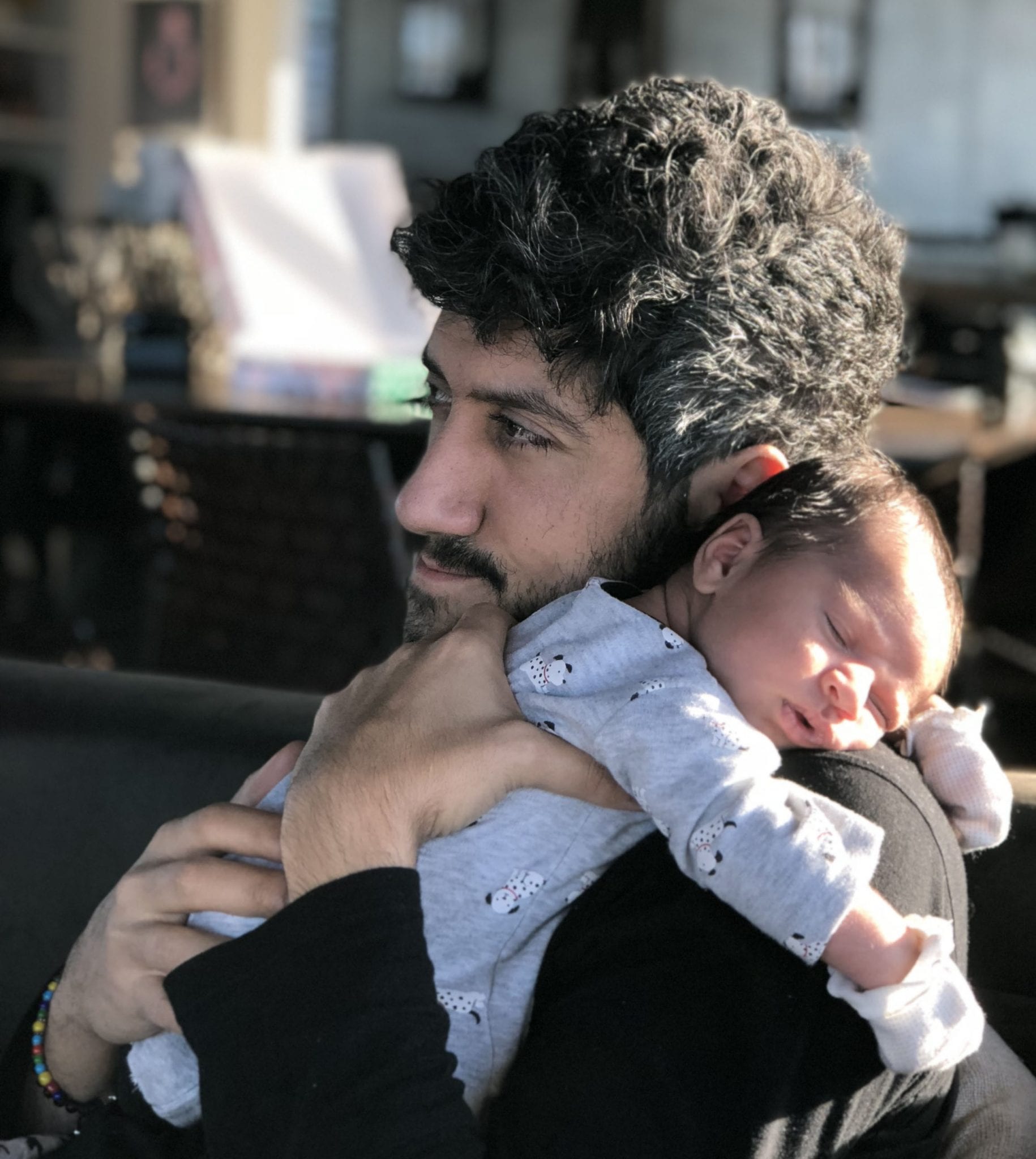
- Adam Singolda, CEO of Taboola and his son, Ozzy Singolda.
A glance into the supersonic ride we call Taboola.
As I look back on 2017, there are so many things that occupied us at Taboola, and as we all look forward to 2018 and the next few years, there’s so much left to do.
I started Taboola over ten years ago now, and I still have to pinch myself every once in a while (a few times in 2017) to convince myself this is real. Some people have been with Taboola since the very beginning, and currently a new person joins us every single day. We were a little over 500 employees at the beginning of 2017, and we’ll be crossing the 1,000 employee mark soon.
100 people apply for a job every day at taboola— or 45k a year—which is more applications than Harvard receives.
Every quarter, at our all hands meeting, I remind Taboola (and myself) that the key thing that we look for when we hire is passion, kindness and intelligence. We now have 15 offices around the world and I must say as I travel between our offices, each and every one feels like home, carrying the same unique culture and vibe but with a local twist, and I love it.
Our reach to consumers is also growing fast, now reaching 1.4 billion people a month, which is around half of global internet users. Over one billion times a month someone clicks on a Taboola recommendation, discovering a story or a product they may like and never knew existed, which at the end of the day—is our mission, vision, and our narrative. Over the course of 2017, these one billion clicks a month helped us generate over $750 million in revenue.
-
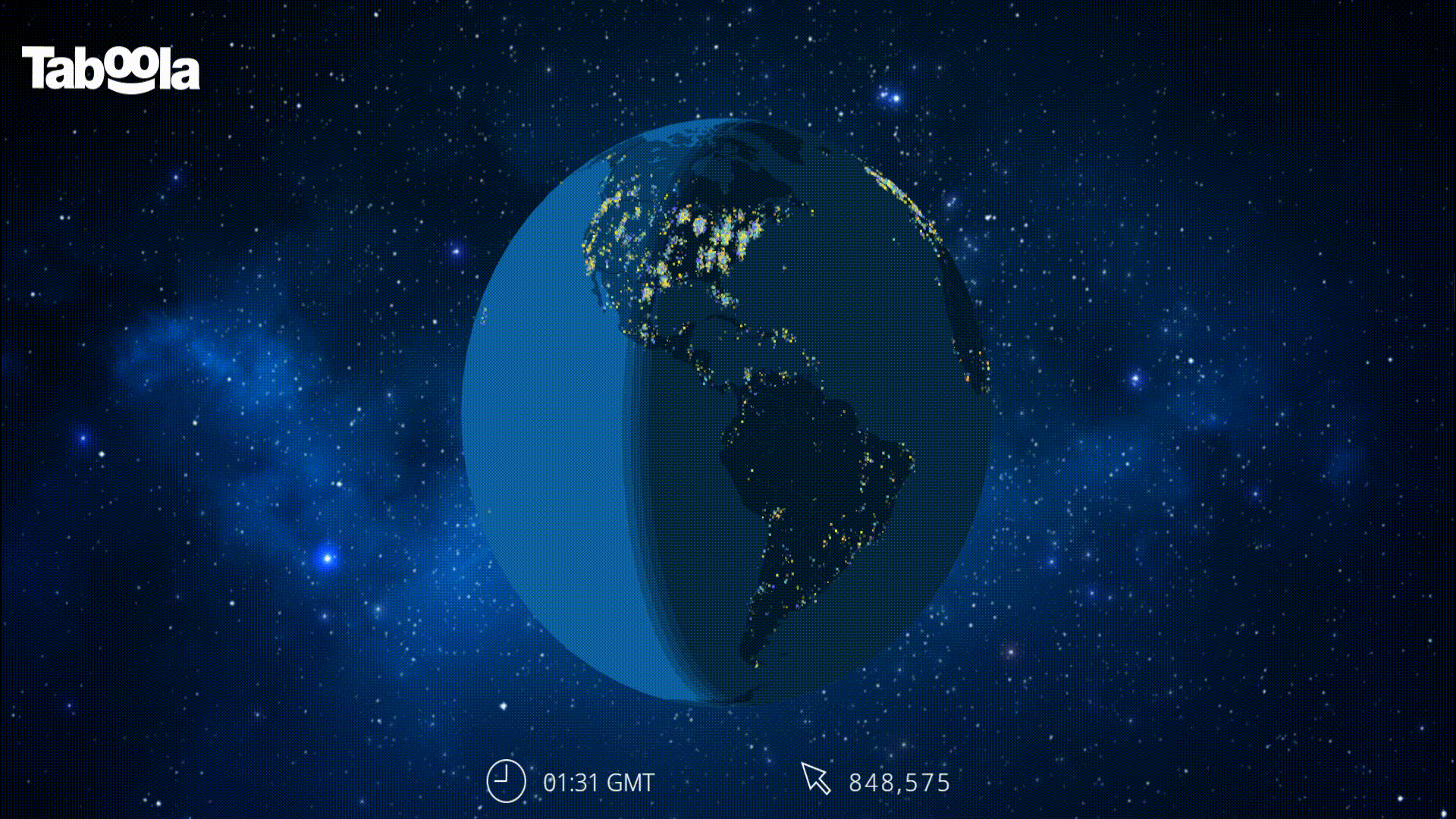
Taboola clicks every day, worldwide.
We are also fortunate to work with tens of thousands of publishers and marketers as well as dozens of agencies in 50 markets around the world. We participated in over 1,000 events just in 2017 together with our partners and made nearly 20 meaningful product and partner announcements across the globe.
That was just a glance of all that is going on at Taboola in 2017, but there is more.
Top stories of 2017 and other cool things we saw.
The sun “Trumped” the US president in web viewership when over half of all readers online turned their attention to the solar eclipse in August.
According to the graph below, which was pulled from our Newsroom Network Insights report, 50 percent of all US readership at 11am on August 21st was about the solar eclipse. Articles about President Trump, which dominated many days of the year during 2017, comprised only 10 percent of articles read that day.
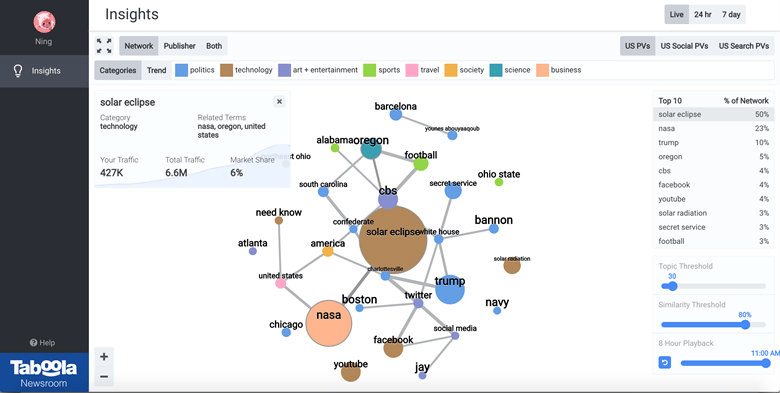
- Reader interest in the recent solar eclipse overshadows Donald Trump. Data from Taboola Newsroom.
Another trend we identified is that publishers can get real time insight into when to start—and when to stop—covering a story in order to capture their audience’s interest in a certain topic.
As an example, in September, interest in Hurricane Irma spiked up tremendously as the Hurricane hit category five force. This can be seen by a huge spike in readership of Hurricane Irma stories around the Taboola Network, but actual coverage of Hurricane Irma, as shown by the number of stories being written across the network, didn’t peak until nearly a week later when reader interest was already starting to decline.
The appetite for Irma stories was already satiated even while some editors were considering further coverage of the topic. This is an opportunity for editors to see how users discover topics around the web, and consider re-allocating resources for topics that are on an upward trend.
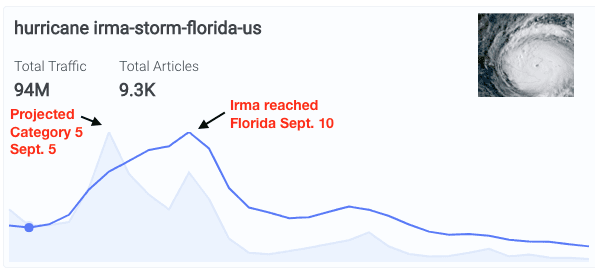
- Interest in hurricane Irma wanes as content creation grows. Data from Taboola Newsroom.
Editors can leverage data to anticipate what stories to cover next.
As an example, it turns out that every time Bitcoin’s price rises, user interest rose in tandem. This tidbit enables editors to cover a story they know their readers would appreciate in the moment.
In this example of Taboola data from December, readership spikes each time Bitcoin prices reached a new high. Knowing that in real-time, there was an opportunity for editors to organically mention Bitcoin in their coverage.
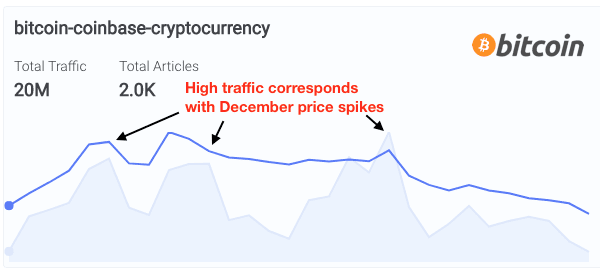
- Interest in Bitcoin spikes with coverage. Data from Taboola Newsroom.
We were also able to identify surprising reading trends during some major cultural events such as the Super Bowl, Fashion Week, The Oscars, The Australian Open, and March Madness.
Finally, we issued our first ever global advertiser trends report, which uncovered that average reader session duration globally is trending towards two minutes. We also saw that advertisers are spending the most in the entertainment, finance and health categories and that mobile usage is (not surprisingly) rising.
We’re fighting fake news and promoting brand safety with a dedicated team, manually reviewing over 1 million articles a month
We made a decision to build a dedicated policy team in 2017. This team speaks nine different languages, reviews over a million articles a month, and is expected to grow 50 percent in 2018.
We participated in hundreds of meaningful conversations this year as the industry faced a huge fake news and brand safety crisis alongside representatives from the White House, universities, GE and other journalistic organizations—conversations that changed us for the better, and we now reject about a third of all pieces of content submitted to Taboola.
We also evolved our work with brands around the topic, became TAG verified, are on board with the ads.txt initiative, and will continue to do more to ensure brand integrity for our partners.
In 2017 we launched Taboola Feed—articles on the Open Web now end with a “social like” experience (versus a “widget”).
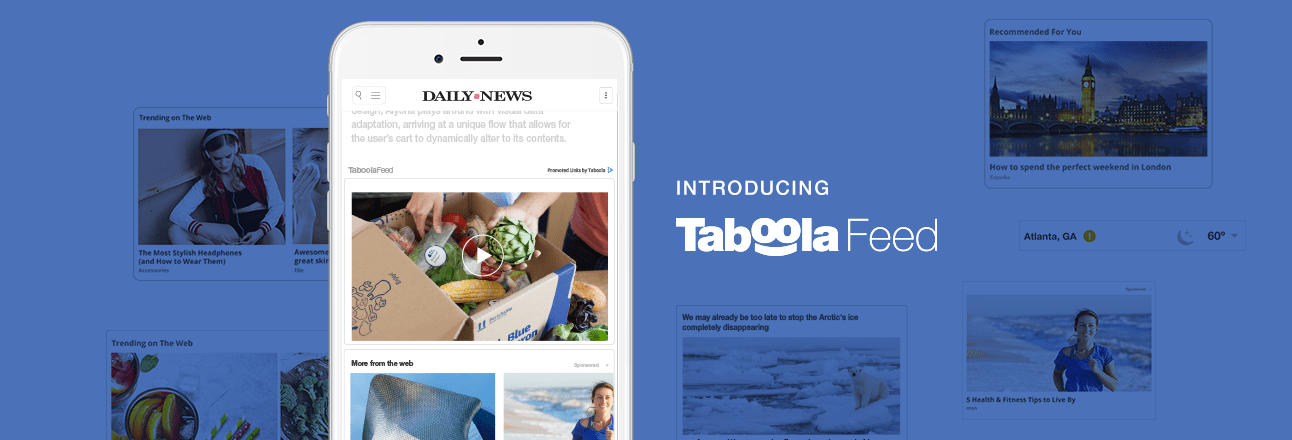
User attention is by far the most important currency. We only have 24 hours a day, and the fight for attention is the hardest one, as people have so much going on.
As we saw users interact with social platforms such as Twitter, Instagram, WeChat and Facebook, where the average person spends 50 minutes every day scrolling alone according to the NYTimes—watching videos, reading articles, and learning about services and products—it became clear to us that our own traditional “widget” experience on the open web might not be good enough to drive the growth our publisher partners can capture, the value marketers are looking for and most important what users love—and we needed to evolve.
Imagine every page on the open web ending with a beautiful social-like feed, personalized, relevant, consistent ‘rendering of things’ people may like and never knew existed.
Imagine a web where people spend minutes—not seconds—on a web page. Isn’t that amazing?
We announced Taboola Feed, and I’m excited to say that nearly 20 percent of our business has already evolved from the widget to Feed. I believe this is an important step for us, and hopefully, by creating a more engaging experience for consumers they’ll stick around before clicking “back” to a social feed.
I would rather have people interact with the open web version of a feed on publishers’ sites versus a social one.
This is particularly exciting for brands who are already used to buying into a feed experience and promoting “cards,” only now they can be positioned next to brand safe content, on awesome websites we all love.
Taboola Will Stream a Billion+ Video Views Every Day, Competing for Dollars with YouTube, Snap and TV.
I strongly believe that Taboola Feed will completely revolutionize video on the open web, unlocking the opportunity for publishers to become massive video broadcasters. I believe video, if done right, is going to be the main driver for the growth of the open web, specifically on mobile devices where users enjoy scrolling, and viewing videos.
For the past 10 years, there has been a scarcity of premium video inventory—which has forced marketers to spend on two main channels: YouTube and TV, and more recently Facebook. I think the open web, with a good feed experience, has a chance to stream more video views than YouTube. I hope that as a company we can facilitate this transition where brands see amazing publishers in the open web as a meaningful alternative to YouTube, Snap and TV when they are considering spending video dollars—presumably $20B by 2020.
To keep segmenting the open web, making it not only a safe and contextual environment for brands, but also targeted—we also launched the web’s first and most extensive third-party data marketplace with partners like Oracle Data Cloud, Acxiom and others and ramped up support of video for both brands and publishers.
We made several improvements for marketers, like the ability to target by zip code and by hour or day, allocate traffic evenly across your creatives, and retargeting capabilities for self-service.
We’re excited to have relationships with some of the best in the business.
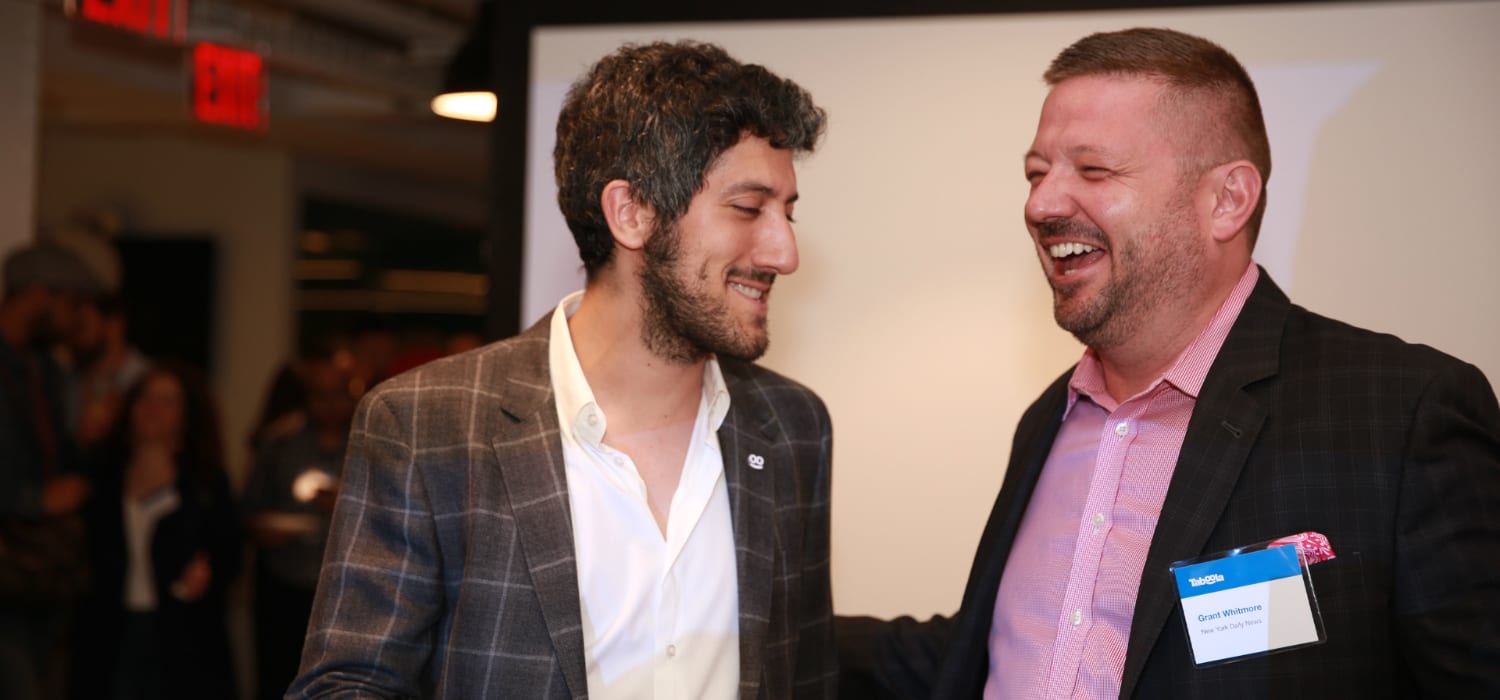
- Adam Singolda, CEO, Taboola (left) and Grant Whitmore, executive vice president of digital at the Daily News (right).
We didn’t do any of it alone. This year, we welcomed Commerce Sciences to the Taboola family and started some awesome partnerships with Reddit, Getty Images, The Trade Desk, Adroll, and LiveIntent so marketers and publishers alike have as much information as possible at their fingertips for success.
I am both proud and humbled to have had the privilege of starting and continuing partnerships with so many great brands and publishers.
We work every day with publishers around the world like the New York Daily News, El Universal, T-Online, BT and many more.
These amazing publisher partnerships are accompanied by relationships with brands like TUI Group, NASCAR, Avocados From Mexico, and thousands of others—I am in awe of these great companies as we embark on the journey of content discovery together.
Thank you and and may we all discover things we may like and never knew existed.
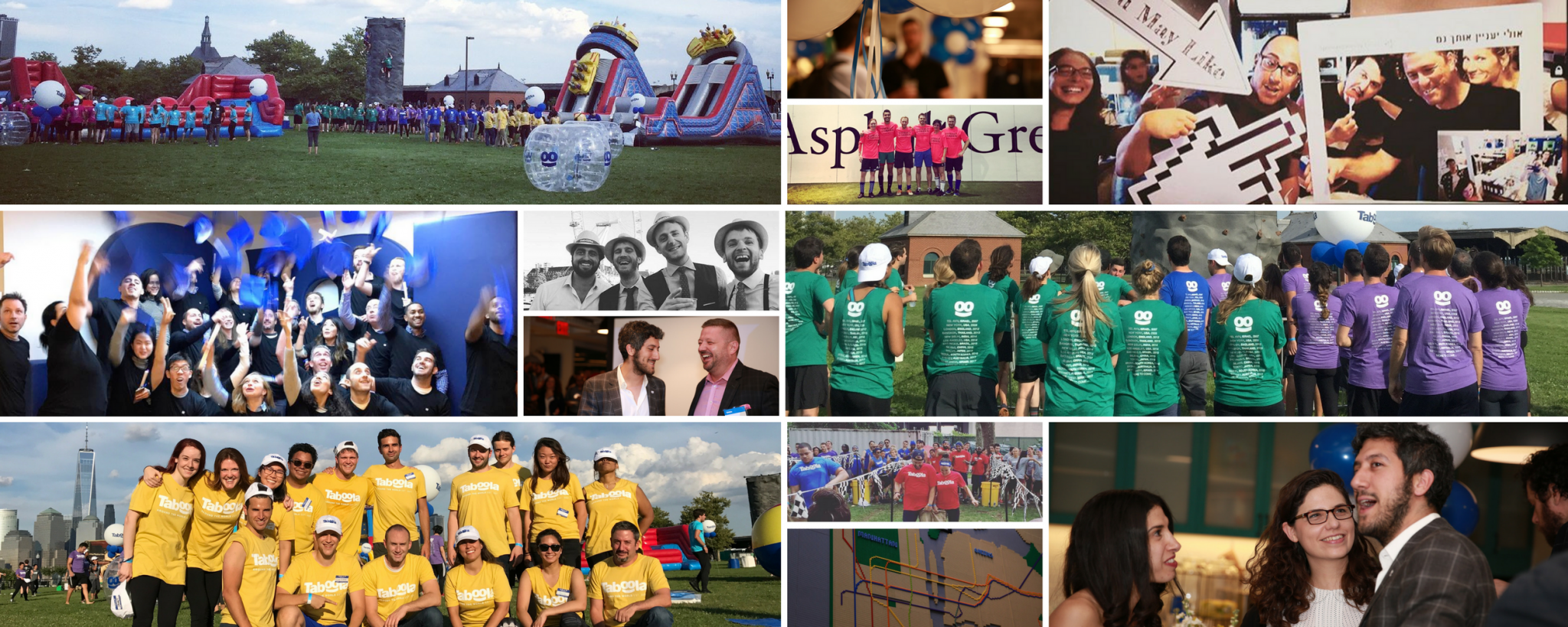
It goes without saying that we have a lot to be thankful for, but I am most thankful for the hard work of all Taboola employees (Taboolars)—without you, none of this dream would have been realized, and we’re still dreaming.
As we continue on this path, we will continue to support storytelling in all forms.
People now want to know about brands—why they do what they do, and what value they can create—which means people don’t want to be bombarded with slogans, they want to “get to know” the brand and build relationships.
I feel grateful for the opportunity to keep investing in the growth of journalism, providing alternatives for brands outside of the walled gardens, and connecting millions of people with valuable and engaging information that exists out there and might be relevant to them. We’ve all had that moment when we discovered something we love—a song, a show, a product, or even a person and suddenly that moment of discovery somehow changed our life.
This is our vision. To be “the recommender,” providing people with personalized recommendations wherever they may be.
I can’t believe 2018 is already here, and I can’t wait to kick it off. Thank you… and happy new year!